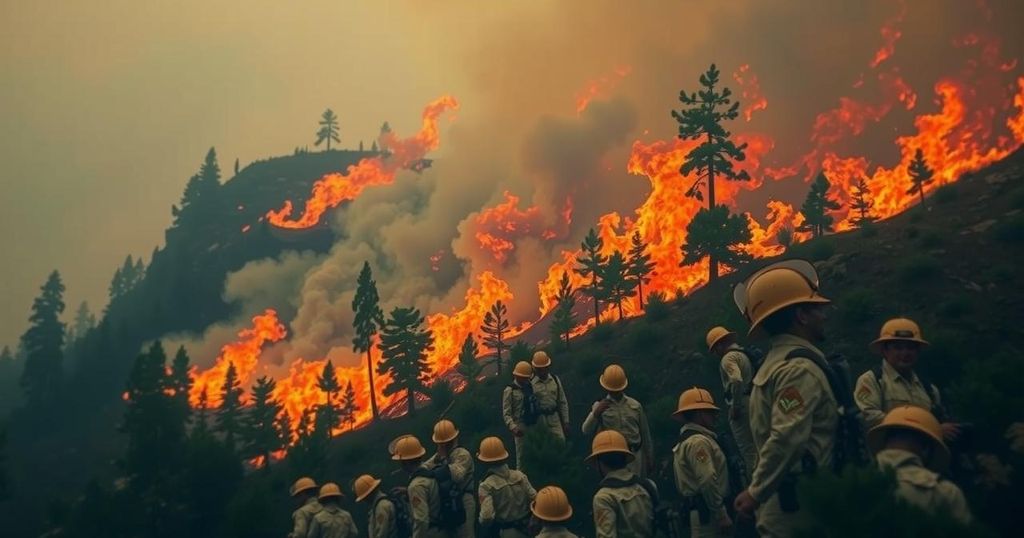A recent study reveals that wildfire smoke pollution, exacerbated by climate change, accounts for an estimated additional 12,000 deaths annually due to PM2.5 inhalation. Global warming is increasing wildfire occurrence, particularly in Australia, South America, Europe, and Asia’s boreal regions. Concurrently, human activities such as land clearing are altering fire dynamics, the effect of which is increasingly overshadowed by climate effects. These findings highlight the urgent public health implications of climate-induced air pollution.
Recent research indicates that smoke pollution from wildfires is contributing to approximately 12,000 additional fatalities annually, attributable to climate-induced changes in fire behavior. The studies, published in Nature Climate Change, revealed that global warming is escalating the frequency of wildfires, particularly affecting regions such as Australia, South America, Europe, and Asia’s boreal forests. An analysis highlighted that global heating had increased the area burned by wildfires by nearly 16% from 2003 to 2019, although concurrent human activities such as land development had reduced total burned areas by 19%. Under the leadership of Dr. Chae Yeon Park from Japan’s National Institute for Environmental Studies, the research estimated that nearly 100,000 individuals die each year due to inhalation of PM2.5 particles from wildfire smoke. These fine particles can penetrate deep into the lungs and enter the bloodstream, posing severe health risks. The interplay between increased temperatures and lower humidity was identified as a primary driver of this escalation in wildfire-related deaths, despite mitigating factors such as land clearing. To achieve a comprehensive understanding, researchers employed global vegetation and fire models under current climatic conditions and compared them against those devoid of climate change influences. Regardless of model variations, results consistently indicated an upward trend in deaths attributed to PM2.5 from wildfires as a consequence of global heating. Prof. Hilary Bambrick, director of the National Centre for Epidemiology and Population Health at the Australian National University, acknowledged the severe pollution levels experienced in Australia during the 2019-2020 black summer fires, leading to numerous fatalities and potential long-term health impacts. Meanwhile, other findings from a study led by scientists from the UK and Belgium emphasized that climate change is intensifying wildfire risks, especially in specific areas such as Australia, Siberia, and African savannas, despite some landscape modifications reducing overall burned area.
The increasing severity and frequency of wildfires across the globe have been interconnected with climate change, particularly global warming. Higher temperatures, combined with lower humidity, are principal factors elevating wildfire risks. Moreover, the interplay between natural environmental changes and human activities, such as land clearing for agricultural or infrastructural development, complicates the understanding of wildfire dynamics. Research focusing on public health implications from wildfire smoke has garnered significant attention, particularly as air quality deteriorates and health risks, notably from PM2.5 particles, become more pronounced.
In summary, the ongoing research underscores the significant health risks posed by wildfire smoke pollution due to climate change. An estimated 12,000 additional deaths annually highlight the urgent need to address these environmental challenges. Increasing awareness of the detrimental health effects of wildfire smoke can inform public health strategies and climate action policies. The studies emphasize that while human interventions may curb wildfire effects, climate change’s impact is pronounced and growing, demanding proactive measures to safeguard public health.
Original Source: www.theguardian.com






